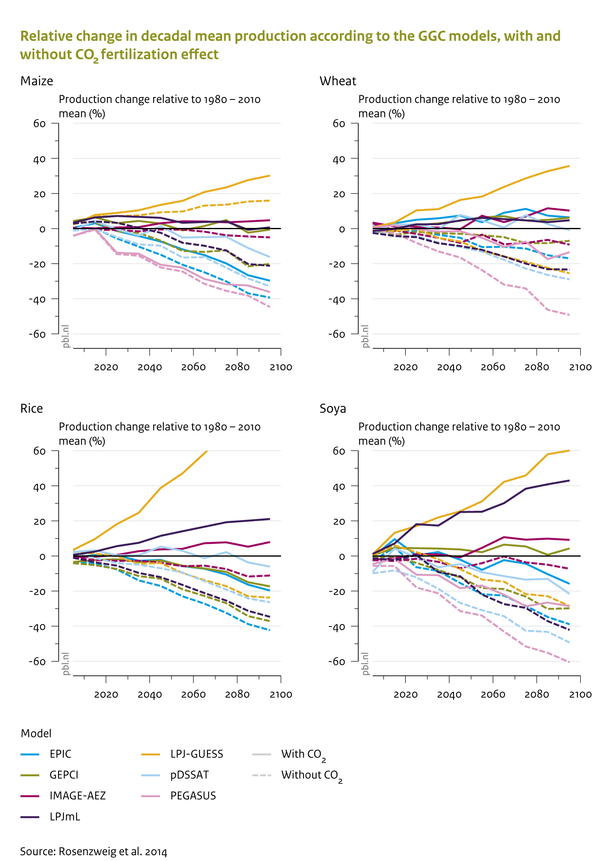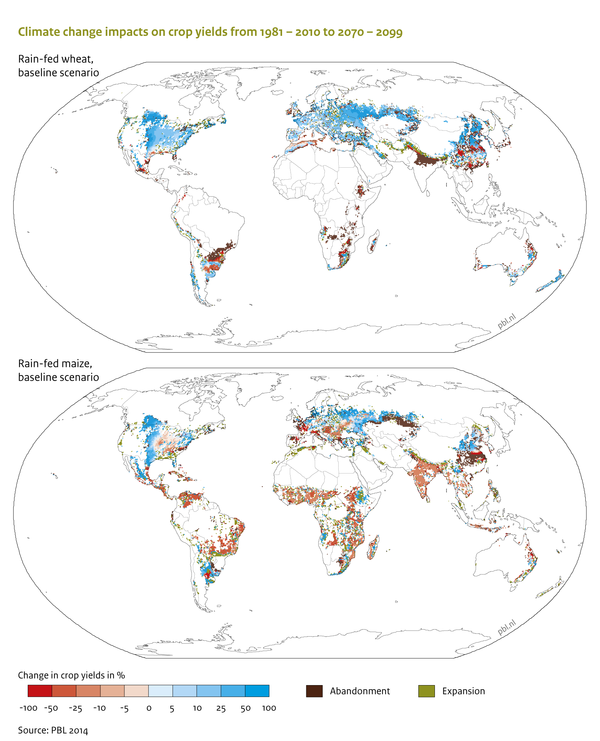Crops and grass/Policy issues
Parts of Crops and grass/Policy issues
| Component is implemented in: |
|
| Related IMAGE components |
| Projects/Applications |
| Key publications |
| References |
Policy issues
Climate change significantly affects crop yields, and these effects differ considerably per region and crop. Assumptions on CO2 fertilisation strongly influence the climate change effect. Without CO2 fertilisation, global average crop yields decline under changing climate but increase for most crops under standard assumptions on CO2 fertilisation (the figure below). Example: Policy interventions that directly affect agricultural production systems comprise environmental regulation, such as use of fertilisers and pesticides. These interventions cannot be directly assessed by the model because of lack of explicit nutrient dynamics, no direct coverage of pest control and water quality. Instead, the model evaluates several indirect policy interventions, such as impacts of climate policy, dietary habits, trade patterns, and land-use regulation.
Climate policies focus on atmospheric CO2 concentration levels, and affect the degree of global warming, and shifts in precipitation patterns. These factors have an impact on agricultural productivity and thus indirectly also influence land-use patterns and water requirements. The impact of climate change on agricultural productivity results from several interacting mechanisms. For instance, climate change and the associated increase in atmospheric CO2 concentrations may increase yields in temperate regions (see the figure below) but decrease agricultural productivity in subtropical and tropical regions. As a consequence, agriculture is abandoned in some areas and expanded to other regions (the figure below). If policy interventions lead to large reductions in greenhouse gas emissions, this directly affects agricultural productivity and associated land-use dynamics (the figure below).


